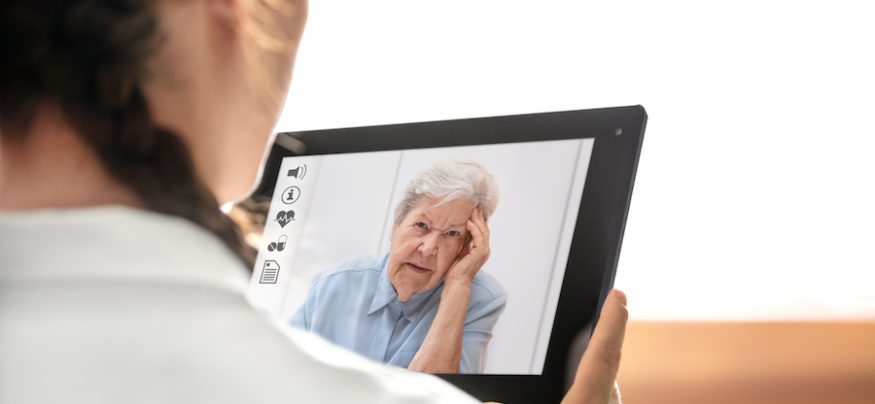It’s not surprising that consumers have embraced telehealth. They’re already using mobile health apps and wearables for fitness tracking, and now most people want options to connect with their doctors virtually.
After all, the smartphone-wielding general populace is accustomed to personalized content, insights and services on demand. Why wouldn’t they want the same technology that enhances their work and personal lives to also make their healthcare more convenient, more personalized and more connected?
The benefits of telehealth for patients are obvious. But what’s in it for hospitals that provide telehealth services?
As it turns out, quite a bit.
Earning additional revenue
For millions of Americans, gaining access to quality healthcare is inconvenient, depending on transportation, distance to nearby hospitals or additional factors. It can be especially difficult for seniors, people with disabilities that make travel difficult and families who live in rural areas.
By enabling physicians to conduct at least some appointments via live video, health systems can attract new patients who aren’t able to drive for hours every time they need to talk to their doctor. This is a particularly powerful tool for patients living in remote, rural and underserved areas, as well as those who need to see specialized physicians who may not be available in all locations.
At the same time, store-and-forward technology enables specialists within the health system to consult with physicians in remote areas, and then bill for that expertise.
How Mobile Solutions Improve Patient Experience
Get your free guide to enhancing the patient experience with mobile technology. Download Now
Greater community visibility
Several recent studies have shown that most people want to use telehealth solutions. For example, 65 percent of patients want to see their primary care provider (PCP) over video, according to a Harris Poll commissioned by American Well. That number jumps to 74 percent for parents with children under age 18. Most importantly, 20 percent of people would switch to a PCP that does virtual visits.
By offering virtual visits, robust mHealth apps and innovative remote patient monitoring (RPM) solutions, health systems attract positive media attention and new patients. At the very least, they don’t lose that 20 percent who are already shopping around for more innovative care providers.
Meanwhile, bedside mobile tablets such as the Samsung Galaxy Tab S4 provide hospital in-patients with disease-specific educational content and entertainment options, helping them rest easier in the hospital and stay healthier when they get home.
Reducing readmissions and increasing HCAHPS scores
Hospitals are looking to reduce readmission rates, improve patient satisfaction and avoid federal penalties associated with subpar performance on these metrics. Telehealth solutions help them meet these goals.
For example, RPM solutions enable care providers to keep tabs on high-risk patients after discharge. Using the real-time patient data from these solutions, care teams can spot negative trends early and intervene before patients’ problems are serious enough to require readmission.
Samsung mobile devices can interface directly with many new pieces of medical equipment, sharing data back via mobile providers to the healthcare organization. In some cases, they can even interface with wearables allowing for incredibly granular real-time tracking.
Boosting staff productivity
If there’s one thing doctors and nurses don’t have, it’s spare time. Efficiency and outsourcing are among the key benefits of telehealth for hospitals.
Because virtual visits save patients time, they’re less likely to miss additional appointments. Mobile apps and patient portals enable patients to schedule their own appointments, request refills and view lab results — all of which means fewer calls for staff to field.
Store-and-forward technology and other types of mobile communication help medical professionals collaborate more quickly. And both telemedicine hotlines and RPM management can be farmed out to third-party data centers and call centers, whose staff does the heavy lifting but also keeps referring physicians in the loop.
Virtual training for medical staff
Medicine is an ever-evolving science, so even the best physicians need regular training and education to remain at the top of their game. Continued learning is important, but it’s not always cheap. Along with registration fees for conferences or training sessions, there are travel costs to consider and lost time with patients.
Using video conferencing technology, physicians can attend conferences (and even present research) remotely. There are also a growing number of virtual reality training solutions for healthcare, which let medical students and physicians observe recorded surgeries from multiple angles, and even go through simulations that provide hands-on experience while they learn new techniques and procedures.
These are just a few of the benefits of telehealth and the innovative ways hospitals are using them. As more health systems adopt these cutting-edge technologies, they’ll undoubtedly find new opportunities to improve the patient experience and the bottom line.
Explore cutting-edge healthcare technology in more depth by checking out our full line of healthcare solutions.








